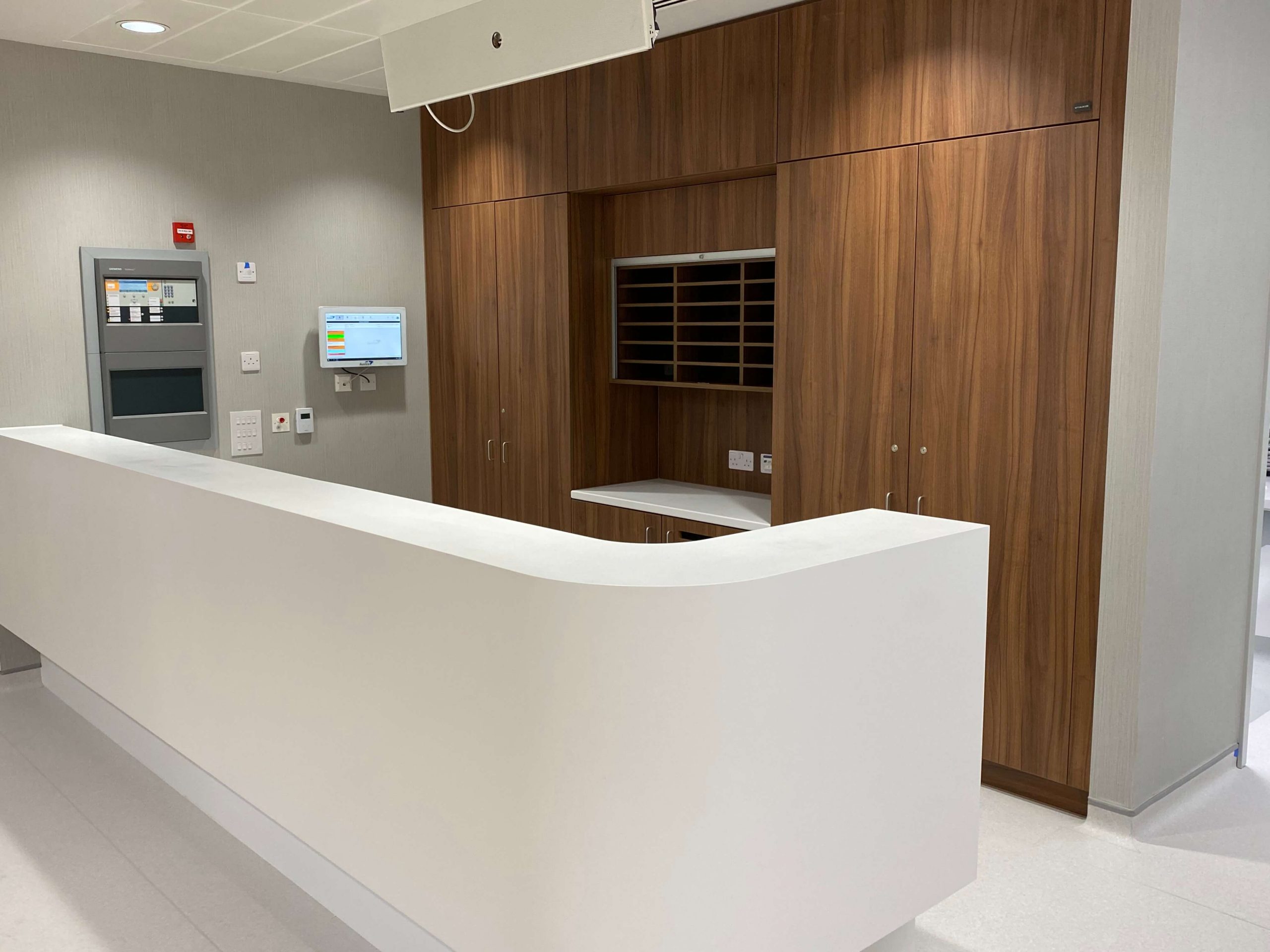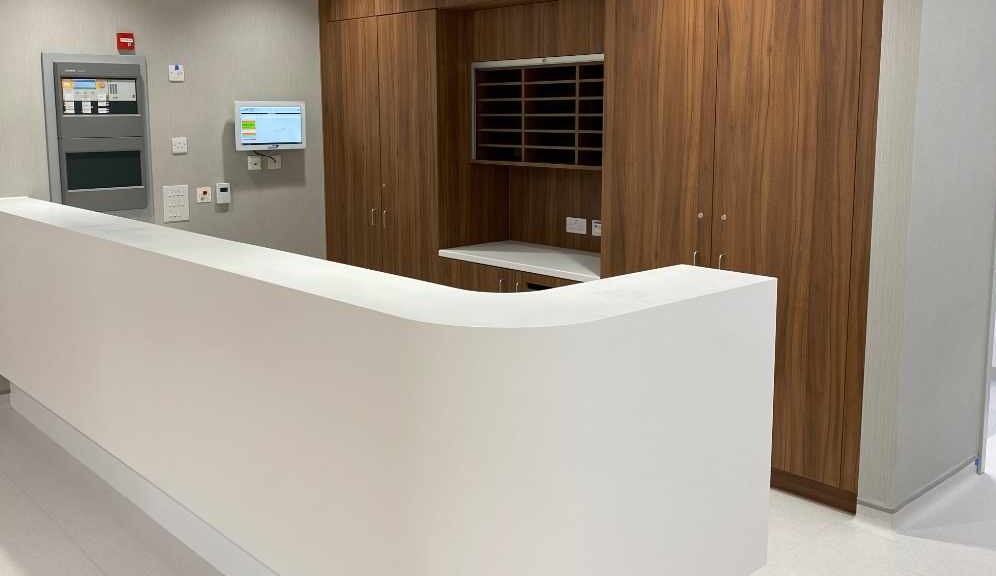Believe it or not the reception desk, a seemingly ordinary fixture in today's hospitals, offices…

Why designers should think again about storage units
“Such is their impact in hospitals, schools, vets’ practices, care homes and other institutions such as prisons, that designers are now having to think again about the role of storage units and other furniture items,” writes Trevor Gillman, managing director of specialist manufacturer, David Bailey Furniture – who adds – “Is it now time to look again at the humble cupboard?”
On face value, storage units rarely get a lot of attention, but they are vital to the health of dozens of different organisations. They can directly affect the way that the NHS looks after the welfare of patients, how schools motivate students and how they can deliver efficiencies and wellbeing across a wide range of different institutions.
Yes, this really is cupboards and storage units that we are talking about. In hospitals for example, pressure on the NHS is higher than at any other time in its history, exacerbated by the continued threat of Covid-19.
Staff at many hospitals are having to work with storage units which have been installed for many years and which have become chipped or damaged, making them difficult to keep clean resulting in the potential for spreading infection.
It is also said that there are reports that frontline staff are frequently disappointed by the lack of storage space, particularly at a time when hospitals and healthcare centres are being asked to be more flexible in their response to patient needs.
Fortunately, senior NHS managers have recognised the problem and are prepared to work more closely with leading manufacturers to ensure the delivery of modern solutions to meet the needs of hospitals in the 21st century.
Lack of suitable storage is also affecting the smooth running of schools with teachers coping with ever increasing classroom sizes. There is a greater need for more storage, preferably in bright colours, particularly for younger pupils, but regardless of the application there are dozens of different building situations which all offer different challenges for design teams.
In public situations fixed storage units should be fitted with sloping tops to ensure dust is unable to build up and any surfaces can be easily wiped clean. Safety is also a consideration in situations where doors can be ripped off and used as weapons to attack staff or other patients. In such cases piano hinges are substituted for conventional openers to reduce such threats. This is particularly important for applications in prisons and mental health units where there is a potential risk for violence.
Serious consideration also has to be given to ensuring that there are no sharp corners or edges where less mobile patients or students might be injured as a result of a fall and in mental health facilities, designers need to ensure that the units offer no potential for patients to self-harm. The right choice of colour and making the best use of available space is also a challenge – while at all times delivering maximum value for money.
As a leading manufacturer we can see that change is happening in healthcare and all other sectors of the furniture market, but when everything else is stripped away, it all gets back to one main priority according to the NHS and every other market sector – cleanliness and infection control.
Healthcare Associated Infections (HCAI) are a major priority and we can see that infection control practitioners are playing an increasingly active role in terms of influencing those involved in the procurement of furniture for hospital environments. Schools, vets’ practices, prisons and all other public areas are also facing healthcare concerns.
This is particularly important at a time when hospitals, schools and other public institutions are expected to be more flexible than ever before with the ability to adapt – sometimes in just a few hours – to the rapidly changing needs of patient, customer and client demands.
While good design, colour and materials all play a key part in this, it really all comes down to working closely with the NHS, schools and other institutions to provide solutions that individually work for them – and no two units are the same. It is the manufacturers and designers who are prepared to be flexible and who are willing to see how the different markets are responding to change, who will be the most successful – and that’s why it is time to think again about the humble cupboard or storage unit – who would have thought?








